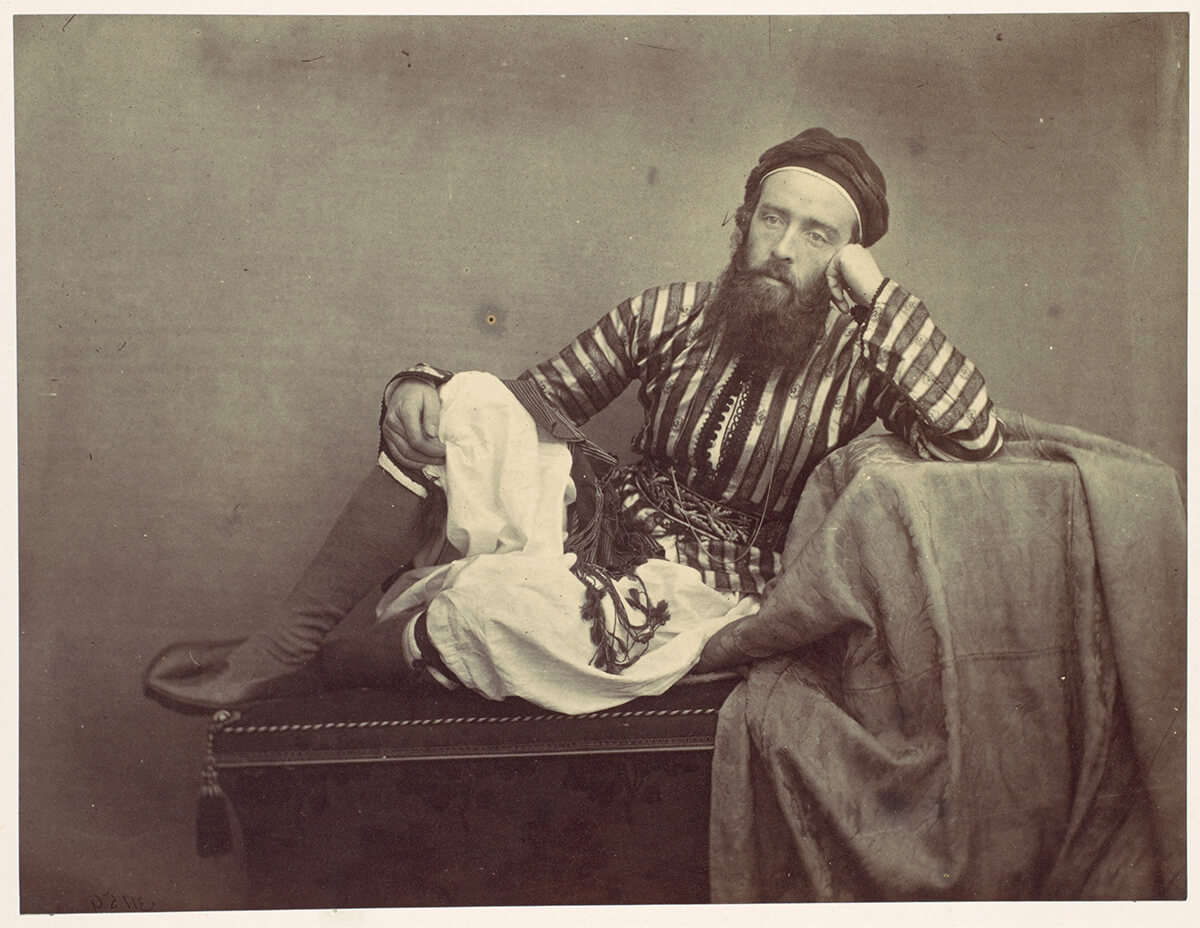Francis Frith was an English photographer of the Middle East and many towns in the United Kingdom. Frith was born in Chesterfield, Derbyshire, attending Quaker schools at Ackworth and Quaker Camp Hill in Birmingham (c. 1828–1838), before he started in the cutlery business. He suffered a nervous breakdown in 1843, recuperating over the next two years. In 1850 he started a photographic studio in Liverpool, known as Frith & Hayward. A successful grocer, and later, printer, Frith fostered an interest in photography, becoming a founding member of the Liverpool Photographic Society in 1853. Frith sold his companies in 1855 in order to dedicate himself entirely to photography. He journeyed to the Middle East on three occasions, the first of which was a trip to Egypt in 1856 with very large cameras (16" x 20"). He used the collodion process, a major technical achievement in hot and dusty conditions. Photographs taken by Frith are held in the Conway Library of Art and Architecture at the Courtauld in London.
When he had finished his travels in the Middle East in 1859, he opened the firm of Francis Frith & Co. in Reigate, Surrey, as the world's first specialist photographic publisher. In 1860, he married Mary Ann Rosling (sister of Alfred Rosling, the first treasurer of the Photographic Society) and embarked upon a colossal project—to photograph every town and village in the United Kingdom; in particular, notable historical or interesting sights. Initially he took the photographs himself, but as success came, he hired people to help him and set about establishing his postcard company, a firm that became one of the largest photographic studios in the world. Within a few years, over two thousand shops throughout the United Kingdom were selling his postcards.
Many of his photographs were collected into published volumes. Initially these works were compiled by established publishing companies. However, by the 1860s, Firth realized that he could profit from publishing his own images and established the publishing company F. Frith & Co.
Frith died at his villa in Cannes, France, on 25 February 1898, aged 75. His family continued the firm, which was finally closed in 1971. Following closure of the business, Bill Jay, one of Britain's first photography historians, identified the archive as being nationally important, and
"at risk". Jay managed to persuade McCann-Erikson the London advertising agency to approach their client Rothmans of Pall Mall on 14 December 1971 to purchase the archive to ensure its safety. Rothmans went ahead and acquired the archive within weeks.
Frith was re-launched in 1975 as
"The Francis Frith Collection" by John Buck, a Rothmans executive, with the intention of making the Frith photographs available to as wide an audience as possible.
On 25 August 1977, Buck bought the archive from Rothmans, and has run it as an independent business since that time – trading as The Francis Frith Collection. In 2016 the company completed a two-year project to scan the entire archive and now holds over 330,000 high resolution digital images. The company website enables visitors to browse all 330,000 Frith photographs, depicting some 7,000 cities, towns and villages.
Source: Wikipedia
Born into a Quaker family in 1822 in Chesterfield, Derbyshire, Francis Frith was a remarkable person, philosophical and devoutly religious by nature and pioneering in outlook. He was a complex and multi-talented man who had a formidable instinct for business. By the time he founded his photographic publishing company in 1860 he had already established a wholesale grocery business in Liverpool which was so successful that by the mid 1850s he was able to sell it for a price which made him a the equivalent of a multi-millionaire today.
Frith had been a founder member of the Liverpool Photographic Society in 1853 – only 14 years after the invention of photography, 1839. Between 1856 and 1860, as a gentleman of leisure, he made three pioneering and sometimes dangerous photographic expeditions to the Middle East, taking bulky cameras, equipment and glass plates with him and travelling by boat, donkey, mule and camel. These journeys took him to Egypt, Nubia, Ethiopia, Sinai, Palestine, Lebanon and Syria, and established his reputation as an outstanding pioneer photographer. The photographs he took on these expeditions were marketed by the London firm of Negretti & Zambra as hugely popular stereoscopic views, and were also published in London and New York in limited edition part-works of prints, with sales totalling over £3 million in today’s value.
Source: www.francisfrith.com
